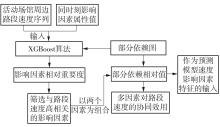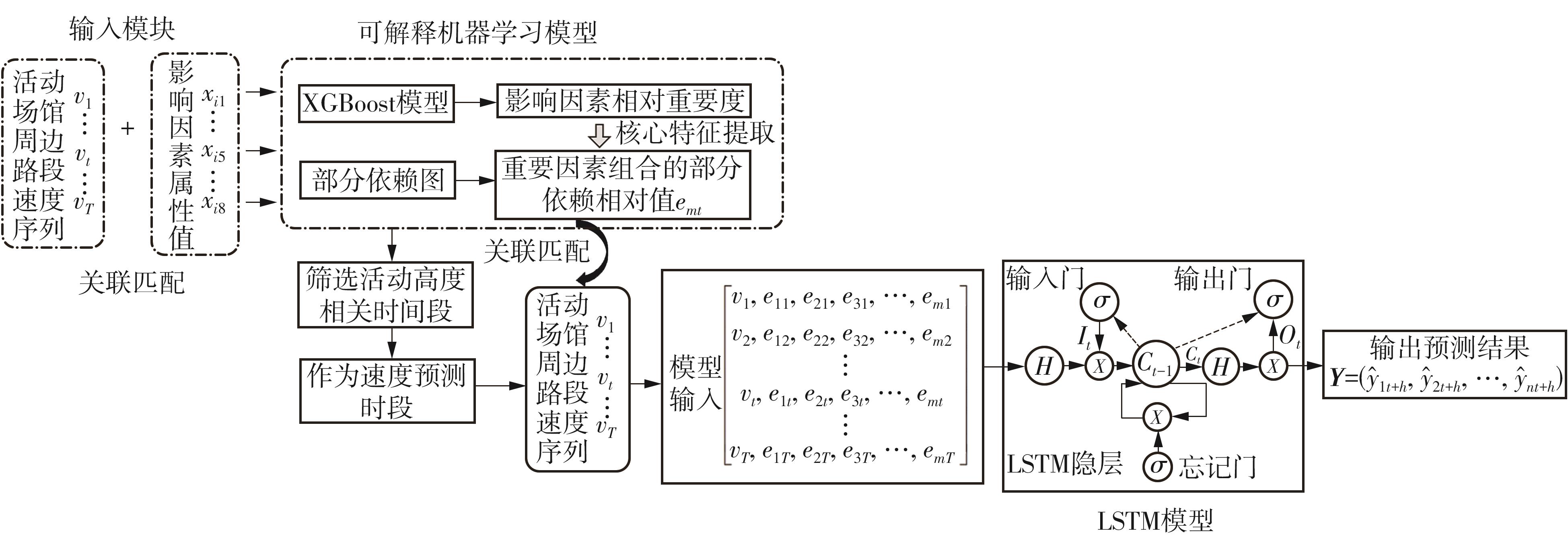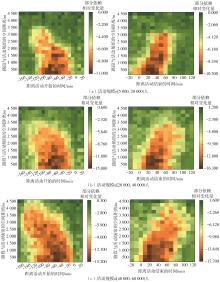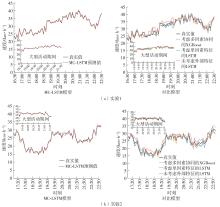| 1 |
GUO J H, HUANG W, WILLIAMS B M .Adaptive Kalman filter approach for stochastic short term traffic flow rate prediction and uncertainty quantification[J].Transportation Research Part C:Emerging Technologies,2014,43(1):50-64.
|
| 2 |
MA T, ANTONIOU C, TOMER T .Hybrid machine learning algorithm and statistical time series model for network-wide traffic forecast[J].Transportation Research Part C:Emerging Technologies,2020,111:352-372.
|
| 3 |
SHAYGAN M, MEESE C, LI W X,et al .Traffic prediction using artificial intelligence:review of recent advances and emerging opportunities[J].ransportation Research Part C:Emerging Technologies,2022,145:10392/1-50.
|
| 4 |
TANG J J, CHEN X Q, HU Z,et al .Traffic flow prediction based on combination of support vector machine and data denoising schemes[J].Physica A:Statistical Mechanics and its Applications,2019,534:120642/1-19.
|
| 5 |
焦朋朋,安玉,白紫秀,等 .基于XGBoost的短时交通流预测研究[J].重庆交通大学学报(自然科学版),2022,41(8):17-23,66.
|
|
JIAO Pengpeng, AN Yu, BAI Zixiu,et al .Short-term traffic flow forecasting based on XGBoost[J].Journal of Chongqing Jiaotong University (Natural Science),2022,41(8):17-23,66.
|
| 6 |
TEDJOPURNOMO D A, BAO Z, ZHENG B,et al .A survey on modern deep neural network for traffic prediction:trends,methods and challenges[J].IEEE Transactions on Knowledge and Data Engineering,2022,34(4):1544-1561.
|
| 7 |
姚俊峰,何瑞,史童童,等 .基于机器学习的交通流预测方法综述[J].交通运输工程学报,2023,23(3):44-67.
|
|
YAO Jun-feng, HE Rui, SHI Tong-tong,et al .Review on machine learning-based traffic flow prediction methods[J].Journal of Traffic and Transportation Engineering,2023,23(3):44-67.
|
| 8 |
霍嘉男,成卫,李冰 .基于多特征数据融合的城市道路行程速度预测[J].深圳大学学报(理工版),2023,40(2):195-202.
|
|
HUO Jianan, CHENG Wei, LI Bing .Urban road travel speed prediction based on muliti-feature data fusion[J].Journal of Shenzhen University (Science and Engineering) 2023,40(2):195-202.
|
| 9 |
MURCA M C R, HANSMAN R J .Identification,characterization,and prediction of traffic flow patterns in multi-airport systems[J].IEEE Transactions on Intelligent Transportation Systems,2019,20(5):1683-1696.
|
| 10 |
林培群,夏雨,周楚昊 .引入时空特征的高速公路行程时间预测方法[J].华南理工大学学报(自然科学版),2021,49(8):1-11.
|
|
LIN Peiqun, XIA Yu, ZHOU Chuhao .Freeway travel time prediction based on spatial and temporal characteristics of road networks[J].Journal of South China University of Technology (Natural Science Edition),2021,49(8):1-11.
|
| 11 |
POLSON N G, SOKOLOV V O .Deep learning for short-term traffic flow prediction[J].Transportation Research Part C Emerging Technologies,2017,79:1-17.
|
| 12 |
付宇,翁剑成,钱慧敏,等 .基于XGBoost算法的大型活动期间轨道进出站量预测[J].武汉理工大学学报(交通科学与工程版),2020,44(5):832-836.
|
|
FU Yu, WENG Jiancheng, QIAN Huimin,et al .Prediction of metro passenger flow during large-scale activities based on XGBoost algorithm[J].Journal of Wuhan University of Technology (Transportation Science & Engineering),2020,44(5):832-836.
|
| 13 |
董春娇,刘晓珂,常乃心,等 .基于网络搜索引擎的大型活动客流规模预测[J].北京交通大学学报,2022,46(4):52-59.
|
|
DONG Chunjiao, LIU Xiaoke, CHANG Naixin,et al .Passenger flow prediction for large-scale events based on network search engine[J].Journal of Beijing Jiaotong University,2022,46(4):52-59.
|
| 14 |
李楚依 .冬奥会开闭幕式观众散场组织[D].北京:北京交通大学,2022.
|
| 15 |
NIU X J, ZHAO X M, XIE D F,et al .Impact of large-scale activities on macroscopic fundamental diagram:field data analysis and modeling[J].Transportation Research Part A:Policy and Practice,2022,161:241-268.
|
| 16 |
王志建,李达标,崔夏 .基于LSTM神经网络的降雨天旅行时间预测研究[J].交通运输系统工程与信息,2020,20(1):137-144.
|
|
WANG Zhijian, LI Dabiao, CUI Xia .Travel time prediction based on LSTM neural network in precipitation[J].Journal of Transportation Systems Engineering and Information Technology,2020,20(1):137-144.
|
| 17 |
赵晓华,亓航,姚莹,等 .基于可解释机器学习框架的快速路立交出口风险预测及致因解析[J].东南大学学报(自然科学版),2022,52(1):152-161.
|
|
ZHAO Xiaohua, QI Hang, YAO Ying,et al .Risk prediction and causation analysis of expressway interchange exits based on interpretable machine learning framework[J].Journal of Southeast University (Natural Science Edition),2022,52(1):152-161.
|
| 18 |
KWOCZEK S, DI Martino S, NEJDL W .Predicting and visualizing traffic congestion in the presence of planned special events[J].Journal of Visual Languages & Computing,2014,25(6):973-980.
|
| 19 |
PULUGURTHA S S, DUDDU V R, VENIGALLA M .Evaluating spatial and temporal effects of planned special events on travel time performance measures[J].Transportation Research Interdisciplinary Perspectives,2020,6:100168/1-12.
|
| 20 |
王振报,李金山,陈艳艳 .大型活动期间交通影响分析方法研究[J].武汉理工大学学报(交通科学与工程版),2010,34(4):758-761.
|
|
WANG Zhenbao, LI Jinshan, CHEN Yanyan .Research on traffic impact analysis method under special events[J].Journal of Wuhan University of Technology (Transportation Science & Engineering),2010,34(4):758-761.
|
| 21 |
杨子帆,徐海辉,钱慧敏,等 .基于多源数据的城市大型活动交通影响评价方法[J].交通工程,2022,22(3):7-12.
|
|
YANG Zifan, XU Haihui, QIAN Huimin,et al .Traffic impact evaluation method for urban large-scale activities based on multi-source data[J].Journal of Transportation Engineering,2022,22(3):7-12.
|
| 22 |
CHEN T, GUESTRIN C .XGBoost:a scalable tree boosting system[C]∥Proceedings of the 22nd ACM Sigkdd international Conference on Knowledge Discovery and Data Mining.New York:Association for Computing Machinery,2016:785-794.
|
| 23 |
HASTIE T, TIBSHIRANI R, FRIEDMAN J .The elements of statistical learning:data mining,inference,and prediction[M].New York:Springer,2009.
|
 ), 吴明珠1, 魏瑞聪2, 王晶晶3,4(
), 吴明珠1, 魏瑞聪2, 王晶晶3,4( ), 毛力增3,4
), 毛力增3,4
 ), WU Mingzhu1, WEI Ruicong2, WANG Jingjing3,4(
), WU Mingzhu1, WEI Ruicong2, WANG Jingjing3,4( ), MAO Lizeng3,4
), MAO Lizeng3,4









